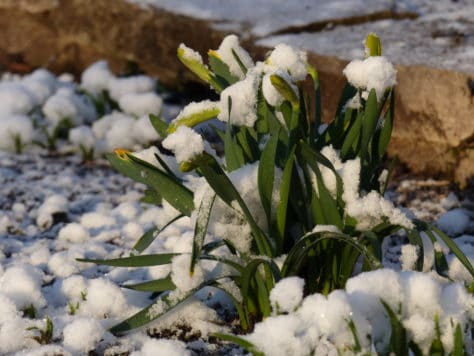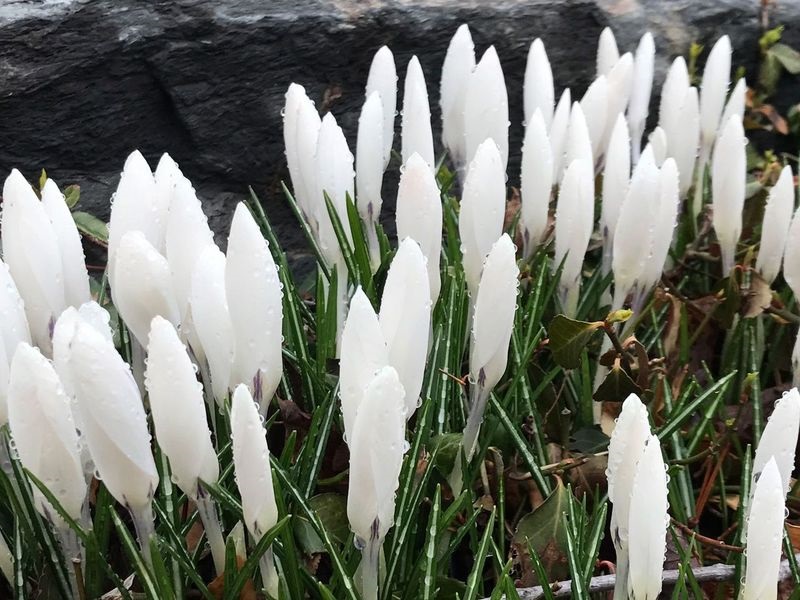So as us humans slowly wake up from our semi hibernation, you’ll soon notice that nature is waking up as well. It’s never too early to think about your landscape!
In the coming weeks, as the temperatures rise and the snow melts, we’ll begin to see the first signs of spring. Bulbs will peek up out of the ground, grass will slowly turn from brown to green and the buds on trees and shrubs will begin to swell for soon the leaves will burst out for spring. Rejoice!

But let’s get ahead of the game and think about our landscape now, even if there is still snow on the ground. Big picture: set a goal for your landscape! Maybe you would like to add a new planting bed, rearrange the perennial garden or update your patio (maybe even create a built in grill!).
Here are some tips for spring maintenance:
- Now is a great time to do some dormant pruning. Prune trees and shrubs for corrective measures by removing cross branches and dead/diseased parts of the plants. Just wait on those spring blooming plants or you’ll be sacrificing those beautiful spring blooms!
- Start planning your garden. This is the time to peruse your garden catalogs and make a list of your must get plants!
- Once the snow is gone it’s time to dig out the garden gloves and get to cleaning up the garden. Remove dead plants, old bedding plants, etc. Clean up leaf debris, cut back perennials. Once you have a clean slate, it’s time to mulch the garden.
- Get your lawn ready by using a pre-emergent before the weeds take over. Fix the areas affected by winter damage with some soil and seed. Once the grass begins to grow, resume watering.
- Don’t forget about annuals. You’ll want to prepare your planting beds or containers for them. Feeling inspired you can plant an early spring container to welcome spring! These include forced bulbs and frost friendly annuals. Be sure to wait until your area is frost free to plant summer annuals.
Remember that goal you set, make sure to incorporate that in your “to-do” list.
The work is never done in the landscape, but once spring has sprung and you’ve tackled your to-do list you can start to enjoy the fruits of your labor!
Is your goal to big for you tackle yourself?
Contact Van Zelst Inc. to help you meet that goal!
